-
 bitcoin
bitcoin $109523.663807 USD
-0.13% -
 ethereum
ethereum $4019.526508 USD
2.06% -
 tether
tether $1.000482 USD
0.00% -
 xrp
xrp $2.776815 USD
0.18% -
 bnb
bnb $958.942396 USD
0.12% -
 solana
solana $204.294698 USD
3.84% -
 usd-coin
usd-coin $0.999693 USD
0.00% -
 dogecoin
dogecoin $0.232115 USD
2.09% -
 tron
tron $0.338028 USD
0.84% -
 cardano
cardano $0.790920 USD
1.50% -
 hyperliquid
hyperliquid $44.871443 USD
5.60% -
 ethena-usde
ethena-usde $1.000322 USD
0.04% -
 chainlink
chainlink $21.034165 USD
2.60% -
 avalanche
avalanche $28.794831 USD
-0.54% -
 stellar
stellar $0.360466 USD
1.24%
What is the difference between coin-margined perpetual contracts and USDT perpetual contracts?
Coin-margined perpetual contracts offer direct cryptocurrency exposure with higher leverage, while USDT perpetual contracts provide stability and simplified risk management by using Tether (USDT) as collateral.
Nov 21, 2024 at 03:56 pm

Understanding Coin-Margined vs. USDT Perpetual Contracts: A Comprehensive Guide
In the dynamic realm of crypto derivatives, perpetual contracts play a pivotal role. Among the various types available, coin-margined and USDT-margined perpetual contracts stand out as the most commonly traded instruments. While they share similarities, these contracts exhibit fundamental differences that can significantly impact trading strategies.
Defining Coin-Margined Perpetual Contracts
1a. Coin-Margined Contracts: Unveiling the Underlying Cryptocurrency
Coin-margined perpetual contracts are derivatives that derive their value from the underlying crypto asset. When entering such a contract, traders pledge a certain amount of the specified cryptocurrency (e.g., Bitcoin or Ethereum) as collateral. This collateral serves as the margin required to maintain the position.
1b. Distinct Properties of Coin-Margined Contracts
Coin-margined contracts provide several notable features:
- Direct Cryptocurrency Exposure: Since the collateral is in the underlying cryptocurrency, traders gain direct exposure to price fluctuations in that asset. Any gains or losses are realized in the same cryptocurrency.
- High Leverage Potential: Coin-margined contracts offer higher leverage compared to traditional financial markets. This leverage amplifies potential profits, but it also magnifies potential losses.
- Strict Risk Management: Due to the inherent volatility of crypto assets, coin-margined contracts require diligent risk management practices. Regular monitoring of collateral levels is crucial to avoid forced liquidations.
Dissecting USDT Perpetual Contracts
2a. USDT-Margined Contracts: Exploring the Fiat Currency Link
USDT-margined perpetual contracts, in contrast, use Tether (USDT) as the collateral. USDT is a stablecoin pegged to the value of the US dollar. This distinct feature sets USDT perpetual contracts apart from their coin-margined counterparts.
2b. Unique Characteristics of USDT Perpetual Contracts
USDT-margined contracts present traders with several key advantages:
- Stable Collateral: By employing USDT as collateral, these contracts offer stability against price fluctuations in the underlying cryptocurrency. This stability reduces the risk of forced liquidations due to collateral value volatility.
- Lower Leverage: USDT perpetual contracts typically provide lower leverage compared to coin-margined contracts. While this limits potential profits, it also reduces the risk of catastrophic losses.
- Simplified Risk Management: The use of USDT as collateral in these contracts simplifies risk management practices. Traders can monitor their positions in terms of the stablecoin's value (e.g., US dollars), making it easier to track and manage their exposure.
A Direct Comparison: Uncovering the Key Differences
- Collateral Type: Coin-margined contracts require collateral in the underlying cryptocurrency, while USDT perpetual contracts use Tether (USDT) as collateral.
- Portfolio Exposure: Coin-margined contracts provide direct exposure to price fluctuations in the underlying cryptocurrency. USDT perpetual contracts, however, offer stability as collateral is unaffected by cryptocurrency market movements.
- Leverage Potential: Coin-margined contracts offer higher leverage, amplifying potential profits and losses. USDT perpetual contracts typically have lower leverage, reducing the risk of severe losses.
- Risk Management Complexity: Coin-margined contracts require careful risk management due to the volatility of their collateral. USDT perpetual contracts simplify risk management practices by using a stable collateral value.
- Suitability: Coin-margined contracts are suitable for advanced traders who seek high leverage and direct cryptocurrency exposure. USDT perpetual contracts are ideal for those seeking stability, lower leverage, and simplified risk management.
Additional Considerations for Making an Informed Choice
In addition to the fundamental differences outlined above, traders should consider the following factors when choosing between coin-margined and USDT perpetual contracts:
- Trading Style: Scalpers and day traders often prefer coin-margined contracts due to their high leverage and the ability to quickly profit from short-term price movements.
- Volatility Tolerance: Traders who prefer to mitigate exposure to price fluctuations may find USDT perpetual contracts more suitable due to the stable nature of their collateral.
- Market Conditions: In bullish markets, coin-margined contracts can provide greater profit potential, while in bear markets, USDT perpetual contracts may offer better protection against losses.
- Platform Accessibility: Different trading platforms offer varying selections of coin-margined and USDT perpetual contracts. Researching platforms to find those that offer the desired instruments is crucial.
Conclusion
Coin-margined and USDT perpetual contracts offer distinct advantages and disadvantages that cater to the diverse needs of crypto derivatives traders. Understanding the fundamental differences between these instruments is paramount for making informed choices that align with trading strategies, risk tolerance, and market conditions.
Disclaimer:info@kdj.com
The information provided is not trading advice. kdj.com does not assume any responsibility for any investments made based on the information provided in this article. Cryptocurrencies are highly volatile and it is highly recommended that you invest with caution after thorough research!
If you believe that the content used on this website infringes your copyright, please contact us immediately (info@kdj.com) and we will delete it promptly.
- Whales, Trump Coin, and Crypto: A New York Minute on What's Hot (and What's Not)
- 2025-09-27 10:25:17
- SWIFT Tests On-Chain Messaging with Linea: A New Era for Global Finance?
- 2025-09-27 10:25:17
- BullZilla Crypto Presale: Surging Through the Meme Coin Jungle
- 2025-09-27 11:05:15
- Binance Coin, WLFI, Crypto Presales: Decoding 2025's Hottest Trends
- 2025-09-27 10:45:15
- Bitcoin, Gold, Stocks: Navigating the Shifting Sands of Investment in 2025
- 2025-09-27 11:05:15
- Bitcoin, Cardano, and Crypto Presales: Is BullZilla the Next Big Thing?
- 2025-09-27 11:10:01
Related knowledge

How do I enable the "scalping-only" mode for Cardano (ADA) contracts?
Sep 24,2025 at 03:19am
Understanding Scalping Strategies in Crypto Derivatives1. Scalping in cryptocurrency trading refers to executing multiple short-term trades within min...
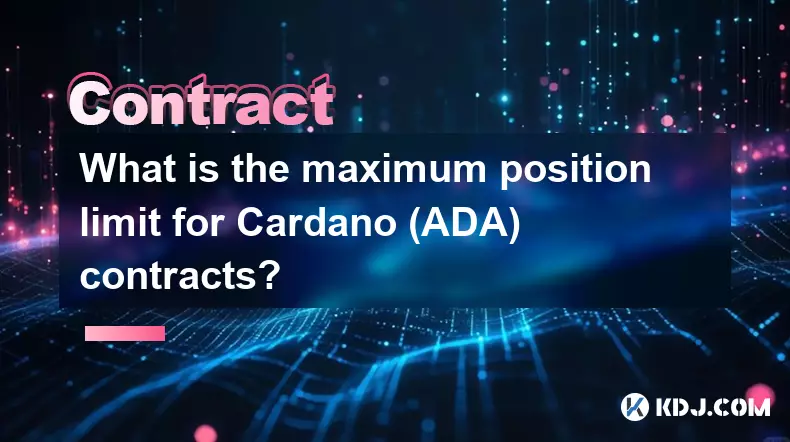
What is the maximum position limit for Cardano (ADA) contracts?
Sep 23,2025 at 11:00pm
Understanding ADA Futures and Derivatives Market Structure1. Cardano (ADA) futures contracts are offered by several major cryptocurrency derivatives e...
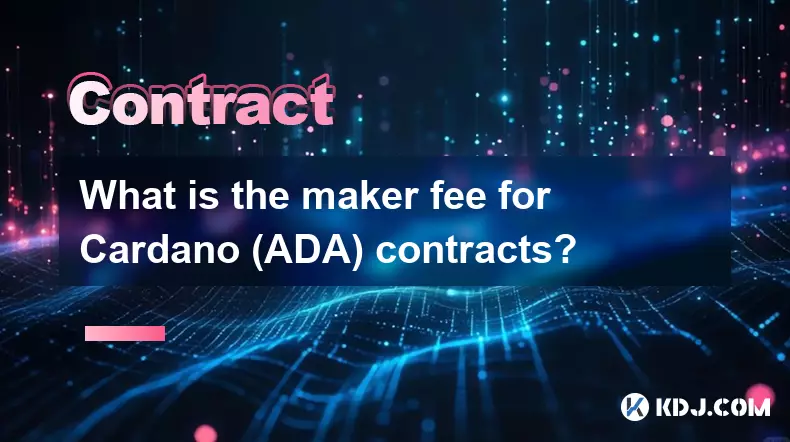
What is the maker fee for Cardano (ADA) contracts?
Sep 26,2025 at 09:01am
Understanding Maker Fees in Cardano (ADA) Contracts1. The concept of maker fees applies broadly across decentralized exchanges and smart contract plat...
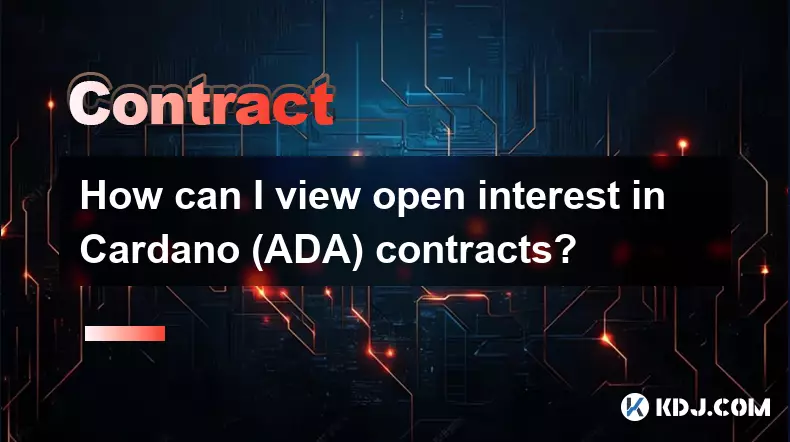
How can I view open interest in Cardano (ADA) contracts?
Sep 24,2025 at 07:36am
Understanding Open Interest in Cardano Derivatives1. Open interest refers to the total number of outstanding derivative contracts, such as futures or ...
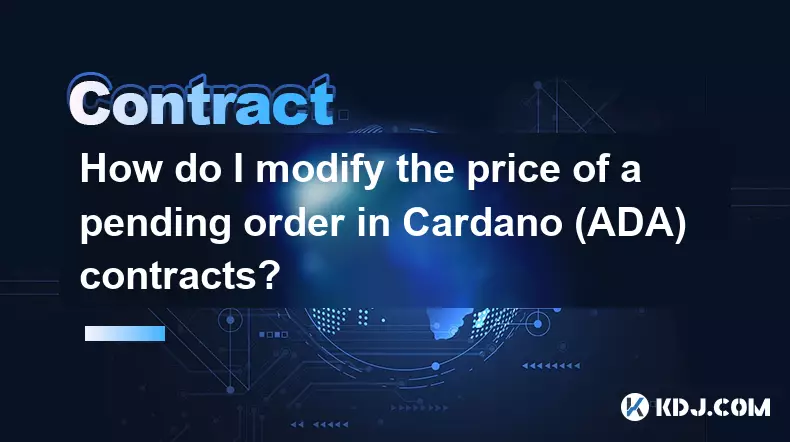
How do I modify the price of a pending order in Cardano (ADA) contracts?
Sep 27,2025 at 01:00am
Understanding Pending Orders in Cardano Smart Contracts1. Cardano operates on a proof-of-stake blockchain that supports smart contracts through its Pl...
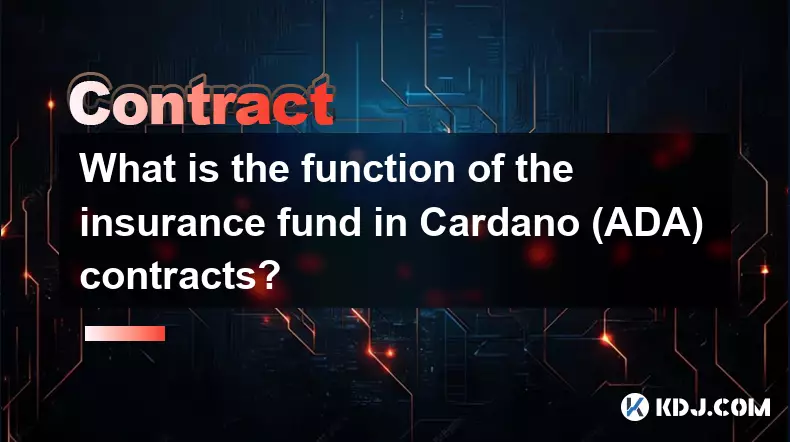
What is the function of the insurance fund in Cardano (ADA) contracts?
Sep 24,2025 at 02:18am
Understanding the Role of Insurance Funds in Cardano Smart Contracts1. The insurance fund within Cardano's ecosystem is not a native feature directly ...

How do I enable the "scalping-only" mode for Cardano (ADA) contracts?
Sep 24,2025 at 03:19am
Understanding Scalping Strategies in Crypto Derivatives1. Scalping in cryptocurrency trading refers to executing multiple short-term trades within min...

What is the maximum position limit for Cardano (ADA) contracts?
Sep 23,2025 at 11:00pm
Understanding ADA Futures and Derivatives Market Structure1. Cardano (ADA) futures contracts are offered by several major cryptocurrency derivatives e...

What is the maker fee for Cardano (ADA) contracts?
Sep 26,2025 at 09:01am
Understanding Maker Fees in Cardano (ADA) Contracts1. The concept of maker fees applies broadly across decentralized exchanges and smart contract plat...

How can I view open interest in Cardano (ADA) contracts?
Sep 24,2025 at 07:36am
Understanding Open Interest in Cardano Derivatives1. Open interest refers to the total number of outstanding derivative contracts, such as futures or ...

How do I modify the price of a pending order in Cardano (ADA) contracts?
Sep 27,2025 at 01:00am
Understanding Pending Orders in Cardano Smart Contracts1. Cardano operates on a proof-of-stake blockchain that supports smart contracts through its Pl...

What is the function of the insurance fund in Cardano (ADA) contracts?
Sep 24,2025 at 02:18am
Understanding the Role of Insurance Funds in Cardano Smart Contracts1. The insurance fund within Cardano's ecosystem is not a native feature directly ...
See all articles










































































